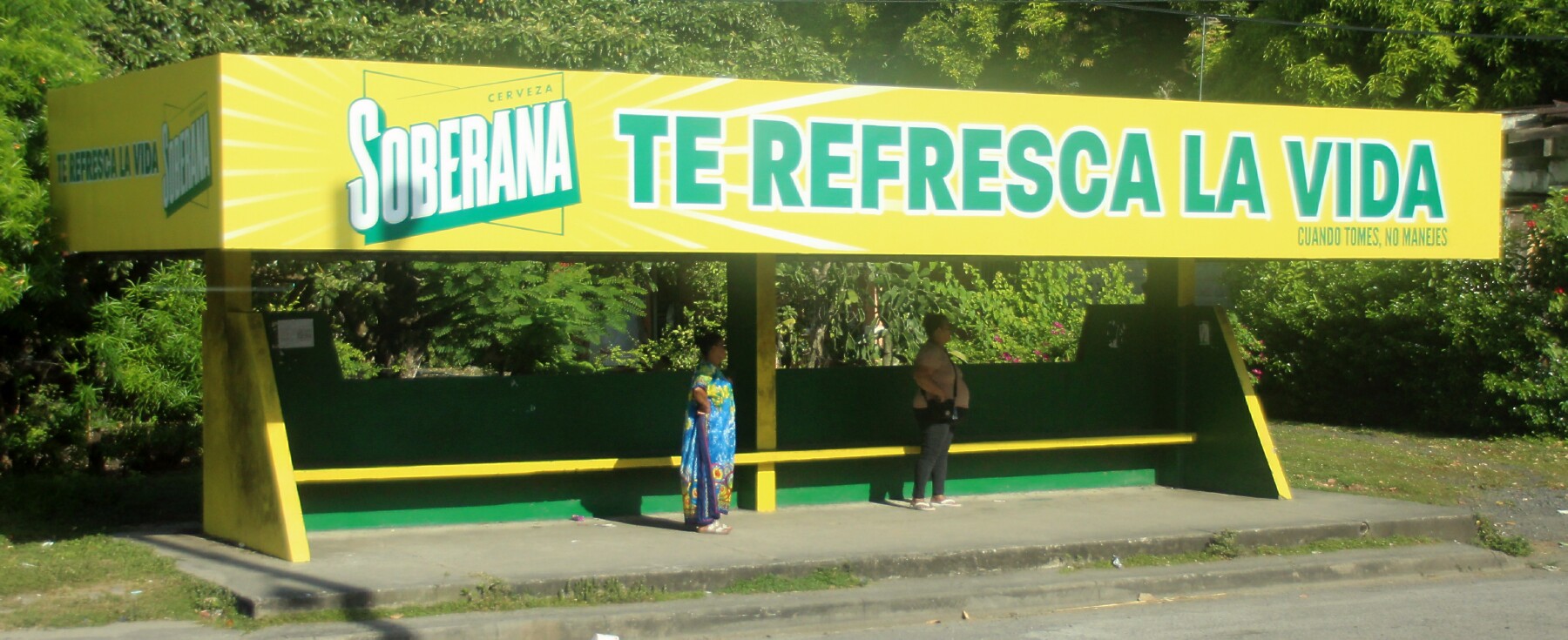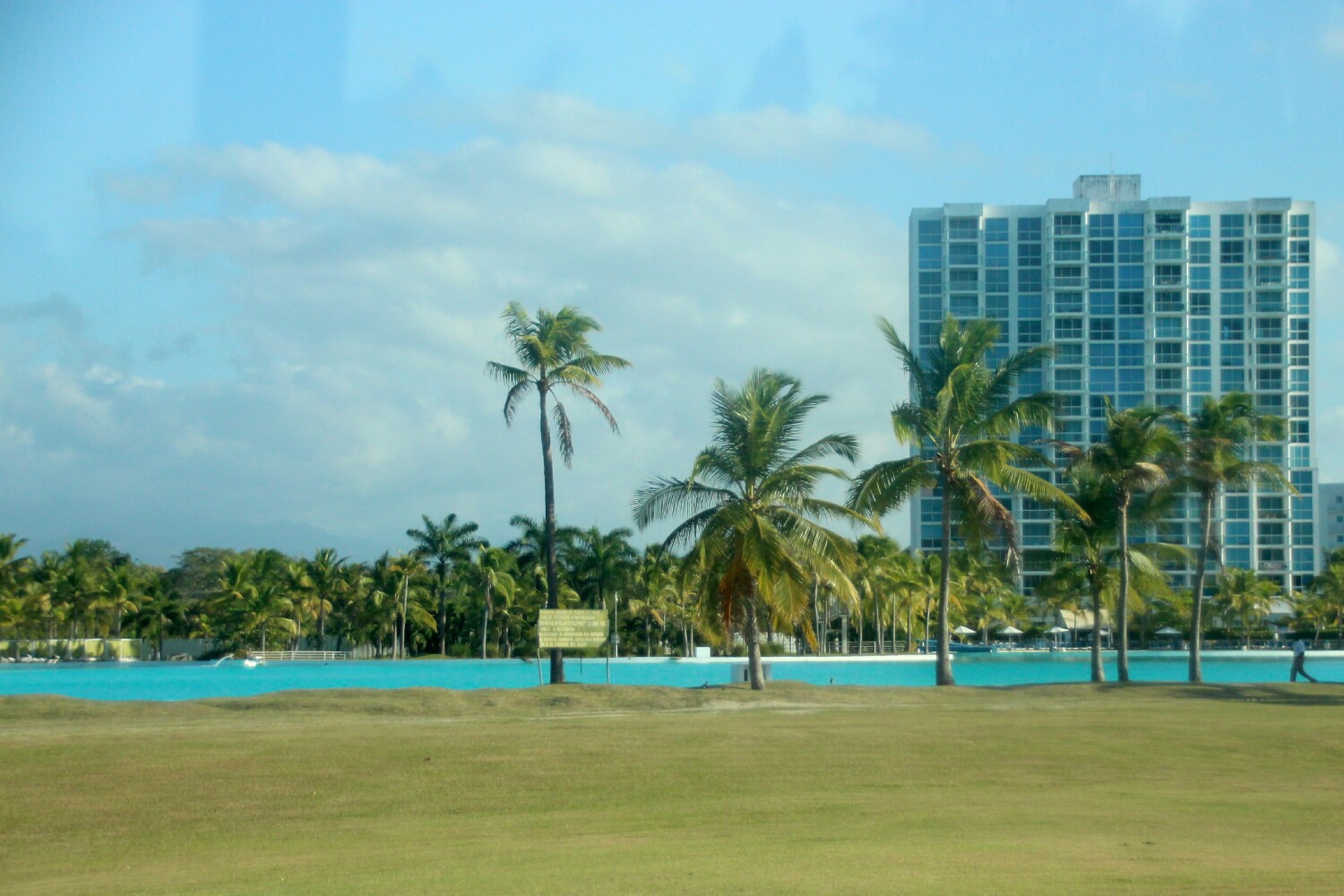Emberá-Wounaan Indigenous Community, Panamá
January 28, 2025
|
My second of two day trips was to Gatun Lake along the Panama Canal, where our group visited the Emberá-Wounaan Indigenous Community. The group took a short motor boat
ride to visit them, and some of their took their members time to explain how they still adhere to many of their traditional building, fishing and clothing practices, and how some
of their crafts, tattoos and cloth making are created. Before we left, dozens of community members demonstrated some of their traditional dances.
After returning, the tour group visited butterfly and frog sanctuaries, and a group of rescued sloths, one of which they tried to return to the wild five times, but each time
the slcth returned back to the sanctuary.
|

Above: One of many bus shelters on the InterAmerican Highway, this largerr one sponsored by the beer brand Soberana,
introduced in 1969 by Heineken.
1 to 5 ... the largest salt water pool in the Americas; villas in Rio Hato; a cemetery along the InterAmerican Highway; one of many strip malls along the highway;
another bus shelter and 7th Day Adventist Church.
7 and 8 ... the Central Mountain range, and the Parque Nacional Altos de Campana.
9 and 10 ... Texaco gas stations, which left Canada in 1989, still going strong in Panama, and Puma, which used to be Esso (Imperial Oil) gas stations.
11 ... crossing the Panama Canal on the newer and less travelled Puente Centenario bridge.
12 ... crossing the newer bridge over Lake Gatun, looking towards the old bridge and Panama Canal.
13 and 14 ... now part of the Gamboa Hotel, these are two of several buildings constructed by 1942 by the American Dredging Company to house workers.
They were built out of sequoia trees of Northern California, the new inhabitants (by decree, whites only) built a railroad station, a civic centre, a school
and no less than five churches.
|

|
|